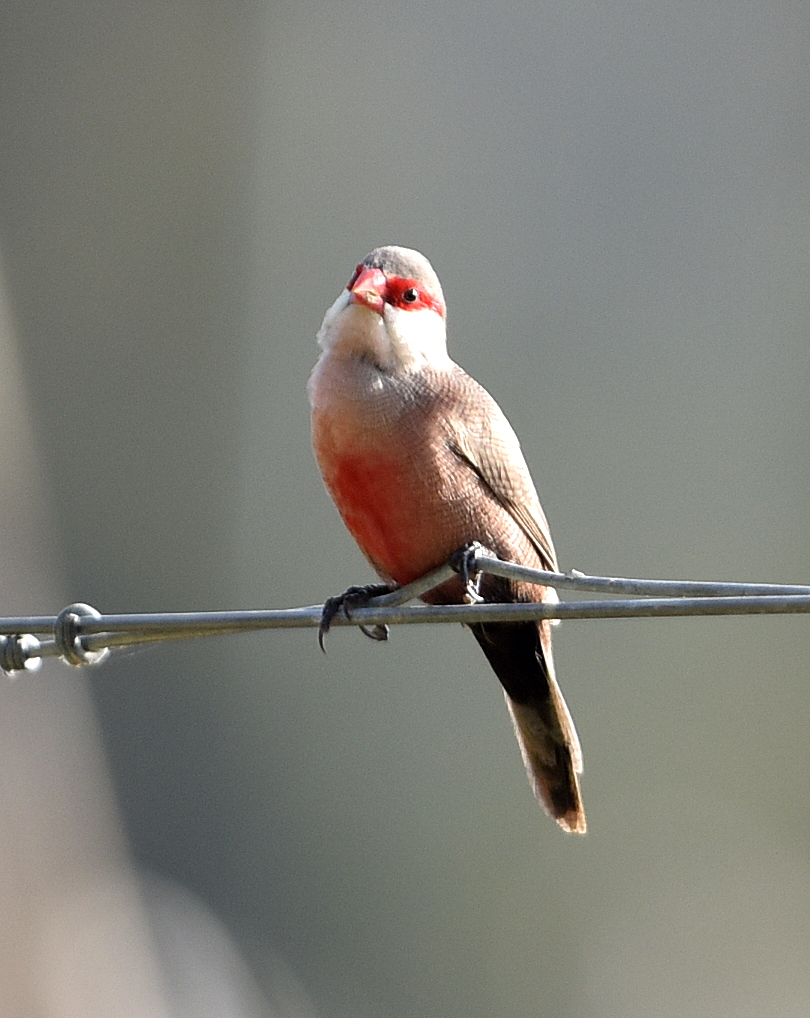Op een van m’n vogeltochten in het Spaanse Andalusië was ik bij de riviermonding van Rio Velez. Een mooi natuurgebiedje vlak bij Velez- Malaga met alles wat vogels zoeken. Stromend water, gras, struiken en riet.
Ik spotte er onder andere de Kleine karekiet, Grauwe vliegenvanger, Monniksparkiet, Boeren zwaluw en Europese kanaries. Ook had ik tot m’n verbazing het geluk een groepje Sint-Helenafazantjes te spotten. Er zijn maar een of twee plekken bekend waar ze in Europa voorkomen. Zulke waarnemingen maken een vogelspotter de koning te rijk.
Het Sint-Helenafazantje is een vogeltje uit de familie van de prachtvinken oorspronkelijk afkomstig uit Afrika. Het kreeg z’n Nederlandse naam door de garnizoen soldaten die Napoleon Bonaparte bewaakte. ( In ballingschap op Sint-Helena van 1815 tot zijn overlijden in 1821 )
Zij hebben de vogel op het eiland ingevoerd die daar een talrijke vogel werd. De vogel kwam er oorspronkelijk dus niet voor.
Met een lengte van 9.5 tot 13 cm en een gewicht van 6 tot 11 gram een klein vogeltje dus. Kenmerkend is het grijsachtige verenkleed met dwarse donkere golflijntjes. Onderzijde licht met roze borst en rode buik. Kenmerkend ook zijn de rode snavel en oogstreep.De geslachten zijn nauwelijks te onderscheiden alleen tijdens de balts is het mannetje te herkennen.
RIO VELEZ, THE COMMON WAXBILL
On one of my birdtrips in Spanish Andalucia, I was at the river mouth of Rio Velez. A beautiful little nature reserve close to Velez-Malaga with everything that birds look for. Flowing water, grass, bushes and reeds.
I spotted there, among others, the Reed- warbler, the Spotted-flycatcher, the Monk- parakeet, the Barn-swallow and European canaries. Also, I was so lucky to find a group of Common waxbills. I was very surprised! There are only one or two spots known where they appear in Europe. Its finds like these that makes a birdwatcher feel the king of the world.
The Common waxbill is a bird that comes from the estrildid finch family, originally from Africa. The Dutch name is St-Helenafazantje, and got it’s name from the soldiers who guarded Napoleon Bonaparte. (In exile on Sint-Helena from 1815 till his death in 1821). They implemented the bird on the island, and many more grew. The bird originally did not live there.
With a length of 9,5 to 13 cm (or about 5 inches) and a 6 to 11 grams weight it’s a tiny bird. Typical is the greyish colour with dark wave lines across. On the bottom light coloured with a pink breast, and a red belly. Also typical is the red beak and red eyeline. You can hardly tell if it’s male or female, only during courtship you recognize the male.





